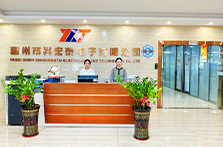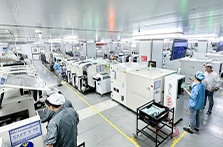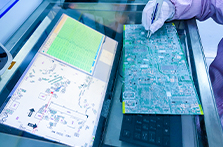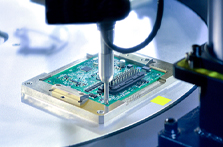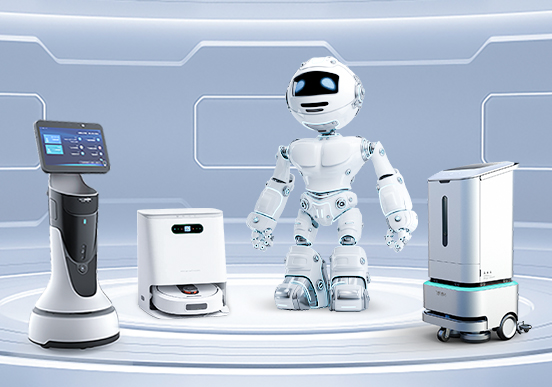Electronics manufacturing industry
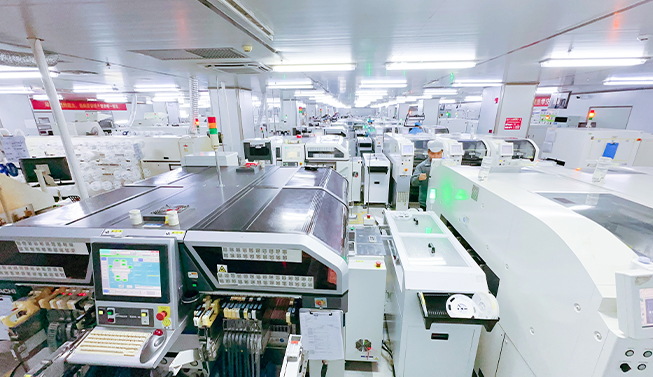
As consumers’ demands for electronic products become increasingly diversified and personalized, the market landscape is changing and iterating at an unprecedented speed. This changing trend has undoubtedly injected strong growth momentum into the electronics manufacturing industry. With the advancement of science and technology, electronic manufacturing is no longer limited to simple electrical products, but has gradually extended to cutting-edge fields such as intelligent manufacturing, the Internet of Things, and artificial intelligence, providing high-tech products such as driverless cars, smart homes, and wearable devices. The birth provides a solid foundation.
However, the development of the electronics manufacturing industry has also brought many challenges, such as environmental protection issues, technological innovation pressure, supply chain management optimization, etc., which have prompted the industry to continuously explore greener, more efficient, and smarter production models. Let’s take a look at what electronics manufacturing issues will be covered in this guide

1. What are electronic manufacturing services?
Electronic Manufacturing Services (EMS) is an industry term that covers a wide range of activities. It not only represents a global production model, but also refers to those companies that focus on providing a full range of electronic products to original equipment manufacturers (OEMs) and brand owners. Specialized subcontractors or companies that manufacture solutions. In this field, electronic manufacturing service providers are responsible for a series of complex processes from product design, prototyping, material procurement, production assembly, quality assurance to logistics distribution and after-sales support, effectively acting as the production engine behind the brand. In addition, “contract manufacturing” (CM) is another concept often used in the electronic manufacturing service industry. The two are used interchangeably to a large extent, both emphasizing the large-scale production of electronic products through outsourcing. Electronic manufacturing service providers use their economies of scale, professional technology, supply chain management advantages, and strict cost control capabilities to help customers reduce operating costs, shorten time to market, and improve product quality.

2. Basic steps of electronic manufacturing
DFM inspection and improvement
DFM inspection is an integral part of the electronic manufacturing process. During the electronic manufacturing process, DFM inspection will conduct a comprehensive and detailed evaluation of the products in the design stage to ensure that the design solution is easy to manufacture, assemble and inspect. XingHongTai’s team of professional engineers will review the product’s processability, ease of assembly, and quality control points, starting from aspects such as material compatibility and process routes, to discover from the source whether there is a better way to design the product.
Based on the results of the DFM inspection, the XingHongTai design team will use advanced simulation technology to simulate the production process, improve the structural layout, and reduce the number or complexity of unnecessary parts; at the same time, it will focus on standardization and modular design of parts to improve commonality and interchangeability. , reduce production costs and inventory pressure, speed up production, and improve overall efficiency.
Material procurement and inspection
XingHongTai Company has a professional electronic component database system, which contains nearly 1,000 leading electronic component suppliers in China, and has established a long-term cooperation system with us to facilitate us to quickly select cost-effective products based on design plans. , high-quality, high-functional electronic components. We will also strictly conduct incoming material testing to ensure that each electronic component can meet production requirements and comply with Rosh environmental standards and product certifications (UL, CE, etc.) in the electronics manufacturing industry.
PCB mounting process
In the electronics manufacturing industry, there are various PCB mounting processes. At XingHongTai, we will combine various processes to meet your needs for different products of various difficulties.
1.SMT (Surface Mount Technology): Fully automatic surface mount technology (SMT) is used to accurately mount resistors, capacitors, IC chips and other components at designated positions on the PCB to achieve the initial construction of the circuit.
2.DIP (Dual In-line Package): For large or special components that are not suitable for the SMT process, such as integrated circuits, power devices, etc., they are inserted into the corresponding holes on the PCB board through a through-hole plug-in (DIP) to complete the component installation.
3.Reflow soldering: After the SMT patch is completed, the reflow soldering process is used to ensure stable soldering quality and reduce defects caused by manual operations.
4.Wave soldering: In the DIP process, we will use wave soldering. Although it is slightly inferior to SMT in terms of space utilization and production speed, the DIP process also has its unique value. For example, components packaged in DIP have higher mechanical strength and good seismic resistance, making them suitable for scenarios that require higher stability.

Testing and assembly
Functional testing is an important part of product quality control. Engineers can verify the functionality of each component on the circuit board, the correctness of electrical connections and the welding quality through some tests, thereby troubleshooting potential faults and ensuring that the product meets design specifications and performance standards. The debugging phase focuses more on in-depth optimization and fine-tuning of the overall system functions to make the product more stable and efficient in the actual operating environment. Assembly is the process of seamlessly integrating rigorously tested circuit boards with other mechanical components, housings, displays, etc. XingHongTai is also constantly exploring new assembly technologies, such as modular design, flexible production lines, etc., to adapt to rapidly changing market demands and the trend of personalized customization.
1.ICT testing (In-Circuit Testing): Online testing, which uses special equipment to detect each component on the PCBA and its interconnections to ensure that all electronic components are installed correctly and form effective electrical connections.
2.FCT test (Functional Circuit Test): Functional circuit test, which simulates the actual use environment and operating mode to comprehensively verify the functions of the entire circuit board and check whether the product can execute various instructions according to the design requirements.
3.AOI test (Automated Optical Inspection): Automatic optical inspection, using high-precision cameras to capture PCBA surface images, and using algorithms to identify whether solder joints and components are missing, offset or poorly welded.
4.Burn-In Test: The PCBA is placed under specific conditions (such as high temperature, high pressure, etc.) for a long time to test the durability and potential failures of the product.
5.X-Ray inspection: For packaged components such as BGA and CSP, X-ray perspective technology is used to check the quality of internal solder joints to ensure that there are no voids, disconnections and other hidden dangers in hidden solder joints.
After passing a series of tests, we will assemble and integrate the PCB motherboard with other structural parts such as casing, display screen, buttons, etc., and gradually form a prototype of a fully functional electronic device. Finally, comprehensive functionality, stability and environmental adaptability tests are conducted to ensure that the product meets the preset standards and passes various certifications.
Packaging, distribution and after-sales
Quality inspection and packaging: We will conduct strict quality control on each finished product, and qualified products will be carefully packaged to ensure safety protection during transportation.
Logistics, distribution and after-sales service: We will deliver the packaged electronic products to consumers by sea, air, etc., depending on your cost requirements, and provide complete after-sales services to ensure user experience.
3. Challenges facing the electronics manufacturing industry
As the electronics manufacturing industry continues to innovate, this industry is also facing a series of severe and complex challenges.
The pressure of rapid technology iteration
With the rapid development of cutting-edge technologies such as artificial intelligence, the Internet of Things, and 5G communications, the speed of upgrading electronic products is accelerating. Electronic manufacturing companies must not only keep up with the pace of technological innovation and master and apply new technologies in a timely manner, but also face rising R&D costs and market expectation management problems caused by shortened product life cycles.
Environmental regulations and sustainable development requirements
Against the background of global green transformation, the environmental pressure faced by the electronics manufacturing industry continues to increase. From the procurement of raw materials to the production process to the recycling of discarded products, we need to strictly abide by increasingly stringent environmental regulations and actively explore new paths for energy conservation, emission reduction, and resource recycling.
Supply chain security and resilience challenges
The global supply chain system has brought efficiency improvements and cost optimization to the electronics manufacturing industry, but it also faces more uncertainties. Such as trade frictions, natural disasters, public health emergencies, etc., may have an impact on the supply chain, highlighting the importance of building an independent, controllable, flexible and resilient industrial chain.
[row_inner_3] [col_inner_3 span__sm=”12″]Changes in labor structure and skills gap
The application of automation and intelligent equipment has increased the demand for high-skilled labor in the electronics manufacturing industry, but it has also led to the reduction of some low-skilled jobs. How to cultivate talents that adapt to the needs of emerging technologies and solve the contradiction between supply and demand of skills is an urgent problem in the electronics manufacturing industry.
[/col_inner_3] [/row_inner_3] [row_inner_3] [col_inner_3 span__sm=”12″]Data security and privacy protection issues
Smart electronic products collect and process a large amount of user data. Data security and privacy protection have become important issues related to corporate reputation and survival. How to ensure user data security while realizing product intelligence is a major test for electronics manufacturing companies.
[/col_inner_3] [/row_inner_3]
4.Future trends in the electronics manufacturing industry
With different demands in the market, the electronics manufacturing industry is also undergoing rapid changes. From automation to intelligence, from green production to customized services, the future trend of electronics manufacturing will not only reshape the entire industrial chain, but also The degree determines the development form and social application of electronic products.
Intelligent Manufacturing and Industry 4.0
With the deep integration of artificial intelligence, big data and Internet of Things technology, intelligent manufacturing has become the core driving force of the electronics manufacturing industry. Through intelligent production lines, advanced functions such as personalized customization, remote monitoring, and predictive maintenance can be realized, greatly improving production efficiency and product quality, and giving unprecedented vitality to the electronics manufacturing industry.
Deepening practice of green and environmentally friendly manufacturing concepts
With the global emphasis on sustainable development, the electronics manufacturing industry is also actively exploring more environmentally friendly production methods. From material selection, process optimization to waste treatment, we strive to achieve resource recycling, reduce pollution emissions, and build a low-carbon, efficient green manufacturing system. This is also the current mainstream development direction of the electronics manufacturing industry.
Miniaturization and Flexible Electronics
With the advancement of microelectronics technology, chips and electronic components are becoming increasingly miniaturized, making electronic products smaller and more portable. At the same time, the development of flexible electronic technology is breaking the limitations of traditional rigid circuit boards and giving birth to innovative product forms such as wearable devices and foldable screen mobile phones, indicating that electronic manufacturing is moving towards a more flexible and multi-functional direction.
5G and cloud manufacturing
The commercial deployment of 5G networks has greatly improved the data transmission rate and connection stability, providing strong technical support for the cloud manufacturing model. In the future, electronic manufacturing may rely on cloud resources for collaborative design, intelligent scheduling and remote control to achieve optimal resource allocation and further enhance the overall efficiency of the industry chain.
The future of electronic manufacturing is no longer just a breakthrough in a single technology or process, but an overall upgrade and transformation integrating advanced technologies in multiple fields. In this process, XingHongTai will continue to pay attention to product and service iterations brought about by technological innovation, and at the same time carry out internal optimization and technological innovation. We sincerely hope to cooperate with you to jointly welcome the innovation of the electronic manufacturing industry.

